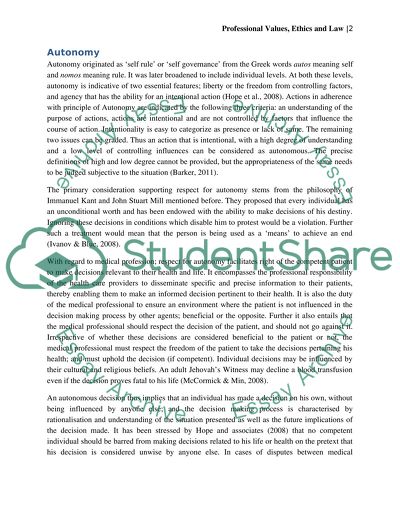Cite this document
(“Professional Values, Ethics and Law Essay Example | Topics and Well Written Essays - 2250 words”, n.d.)
Retrieved from https://studentshare.org/nursing/1451531-professional-values-ethics-and-law
Retrieved from https://studentshare.org/nursing/1451531-professional-values-ethics-and-law
(Professional Values, Ethics and Law Essay Example | Topics and Well Written Essays - 2250 Words)
https://studentshare.org/nursing/1451531-professional-values-ethics-and-law.
https://studentshare.org/nursing/1451531-professional-values-ethics-and-law.
“Professional Values, Ethics and Law Essay Example | Topics and Well Written Essays - 2250 Words”, n.d. https://studentshare.org/nursing/1451531-professional-values-ethics-and-law.


